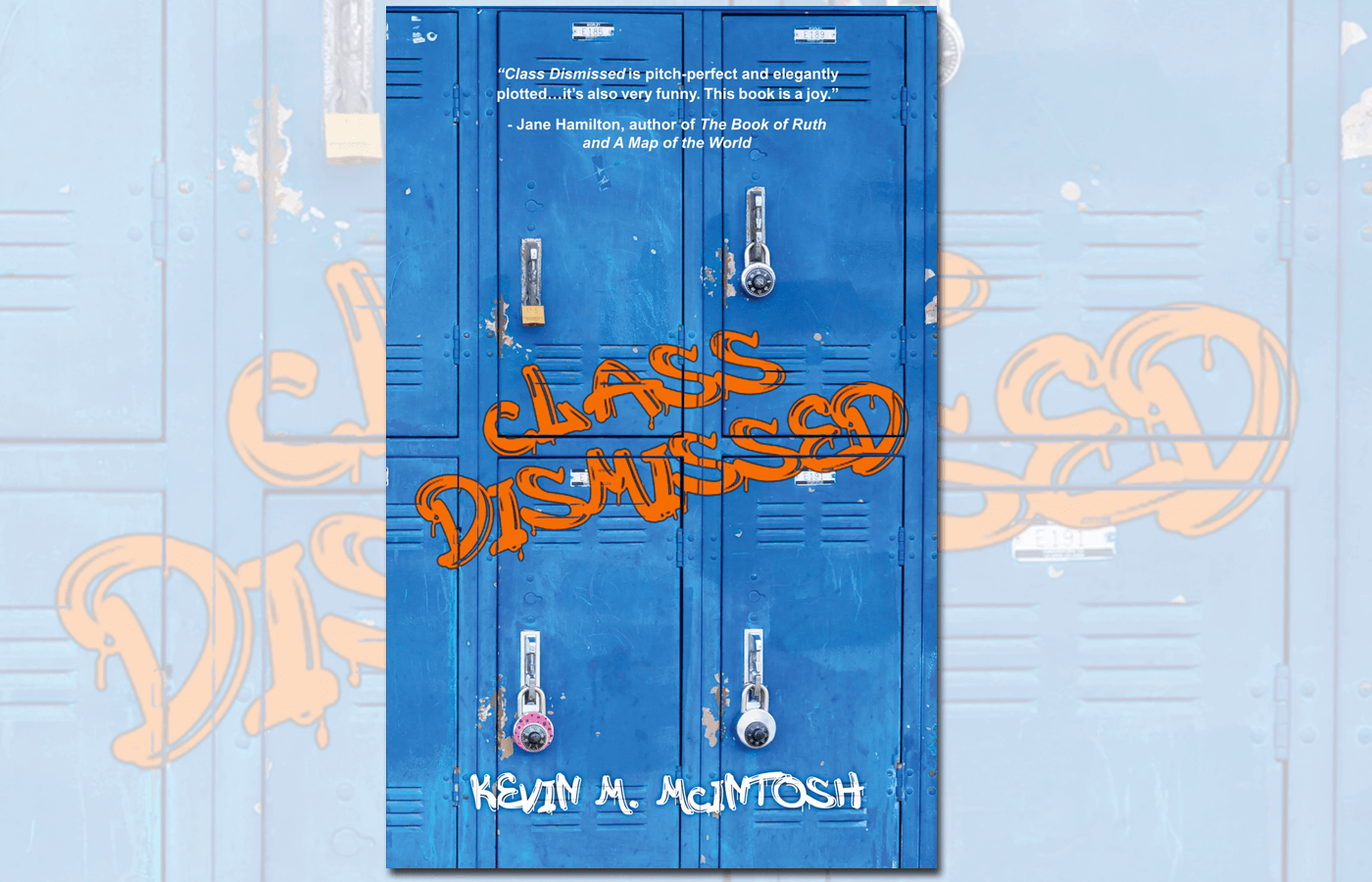
There aren’t many good novels about K-12 schooling. I tend to think this is for the same reason there aren’t a lot of good novels about sports. With sports, the story usually comes down to a big game. Win or lose, the tropes are familiar. And the emphasis on cathartic victory or growth-inducing loss leaves little room for character depth, complexity, or whimsy.
Novels about schooling suffer from a similar problem. They’re usually about a teacher’s heroic journey or success in helping that hard-to-reach kid. The themes are worn-out, and the tales tend to feature the moral complexity of a grade-B Western.
Well, Class Dismissed ditches the familiar school novel formula, and it pays off nicely. Published last year by 30-year teaching veteran Kevin McIntosh, who has authored Pushcart Prize-nominated short stories, Class Dismissed traces the eventful journey of high school teacher Patrick Lynch from Minnesota to New York—and then back to Minnesota.
It takes a tale that could’ve been familiar and subverts it in interesting ways. Lynch is a talented young teacher who heads to New York City, does good things for kids, finds like-minded allies, and takes on the burned-out cynics in the faculty lounge. But rather than plodding along the predictable path, the story heads off in some unfamiliar and unexpected directions.
Opening with a shell-shocked Lynch, who’s retreated to the comfortable confines of small-town Minnesota, it flashes back from there. From the first page, it’s clear that Lynch’s is less a hero’s journey than an examination of where insecurity, arrogance, good intentions, frustration, and happenstance take him.
 Lynch is a sympathetic figure but no plaster saint. Meanwhile, it turns out that those burned-out faculty lounge cynics possess some street savvy and hard-won wisdom. The reader gets a revealing glimpse of faculty spats, game-playing parents, teacher exhaustion, the pull of the classroom, and New York City’s infamous “rubber room” for displaced teachers.
Lynch is a sympathetic figure but no plaster saint. Meanwhile, it turns out that those burned-out faculty lounge cynics possess some street savvy and hard-won wisdom. The reader gets a revealing glimpse of faculty spats, game-playing parents, teacher exhaustion, the pull of the classroom, and New York City’s infamous “rubber room” for displaced teachers.
There are interactions that feel overripe, but there are also plenty of places where McIntosh shows a good feel for classroom dynamics: “Second period wanted to look good too. Some classes—fourth period, fuggedaboutit—had no pride. But second period, even Abdul, sat up a little straighter when Silverstein flitted through. They didn’t want to be caught caring but they did.”
Throughout the book, McIntosh captures a teacher’s interior monologue as deftly as I’ve ever seen: “Maria was evaluating her crimson nails. Abdul was about to punch Julio’s shoulder. Josh was sleeping. Angela—Angela!—was sketching on her desk. She was his canary in the coal mine; if he lost her, it really was over.” Lynch is a teacher as a person rather than an avatar.
The characters are more richly drawn than is typical in novels about education. And one can’t help but get the sense that McIntosh has closely studied Tom Wolfe works like Bonfire of the Vanities, as his set pieces radiate some of that same flamboyant pathos and attention to detail.
McIntosh has some set pieces that are true-to-life, delightful, and maddening, all at once. There’s one where a newly-hired Lynch is struggling to get his first paycheck from the board of ed. It elegantly captures the frustration that so many teachers have shared when battling central-district intransigence. There are scenes with an out-of-control pushy parent and with Lynch’s AFT attorney that just pop. And the rubber-room scenes are terrific.
The plotting that fuels the crucial twist of the novel is rather elegant, and the follow-through shows attention and care. Character motivations are consistent, and all the various pieces of the story feel earned. Indeed, there’s a pivotal New York Post headline tied into the plot twist so cleverly conceived, it would’ve done Wolfe proud.
That said, the book also has its shortcomings. The most jarring of these is the weirdly dated setting. For reasons that are never made clear, the author sets the book nearly three decades ago, in an educational landscape that now feels a bit like a time capsule. There are a number of occasions, when the narrative drifts into talk about reform, the union, the New York City leadership, or classroom norms, that I’d find myself reflexively checking the publication date.
The whole thing is something of a mystery, given that McIntosh doesn’t make particular use of that era. So, what’s going on? Did he have the manuscript in a drawer for two decades? Was there some time-contingent plot device that got trimmed along the way? Maybe other readers will shrug it off, but I found it to be a real distraction. This setting, of course, also means the book is wholly removed from the debates and cultural shifts that have riled schools during the 21st century, so some of the faculty and student-teacher interactions may feel strangely dated. So, be forewarned.
I mentioned a bit earlier that the book came out last year. It says something about the publishing industry that I only saw Class Dismissed because the author reached out and shared a copy. I wish the publisher had done a better job getting this book out there. Because education would benefit mightily from more popular accounts that foster honest conversations about teaching, its frustrations and rewards, and what we ask of teachers.
At a time when schools are struggling with staffing and teachers feel unappreciated, that kind of talk is sorely needed. And here Kevin McIntosh delivers it. Class Dismissed isn’t a perfect book, by any means. But it’s a revealing, gripping, and highly readable volume that’s well worth your time.
Frederick Hess is director of education policy studies at the American Enterprise Institute and an executive editor of Education Next.
This post originally appeared on Rick Hess Straight Up.


